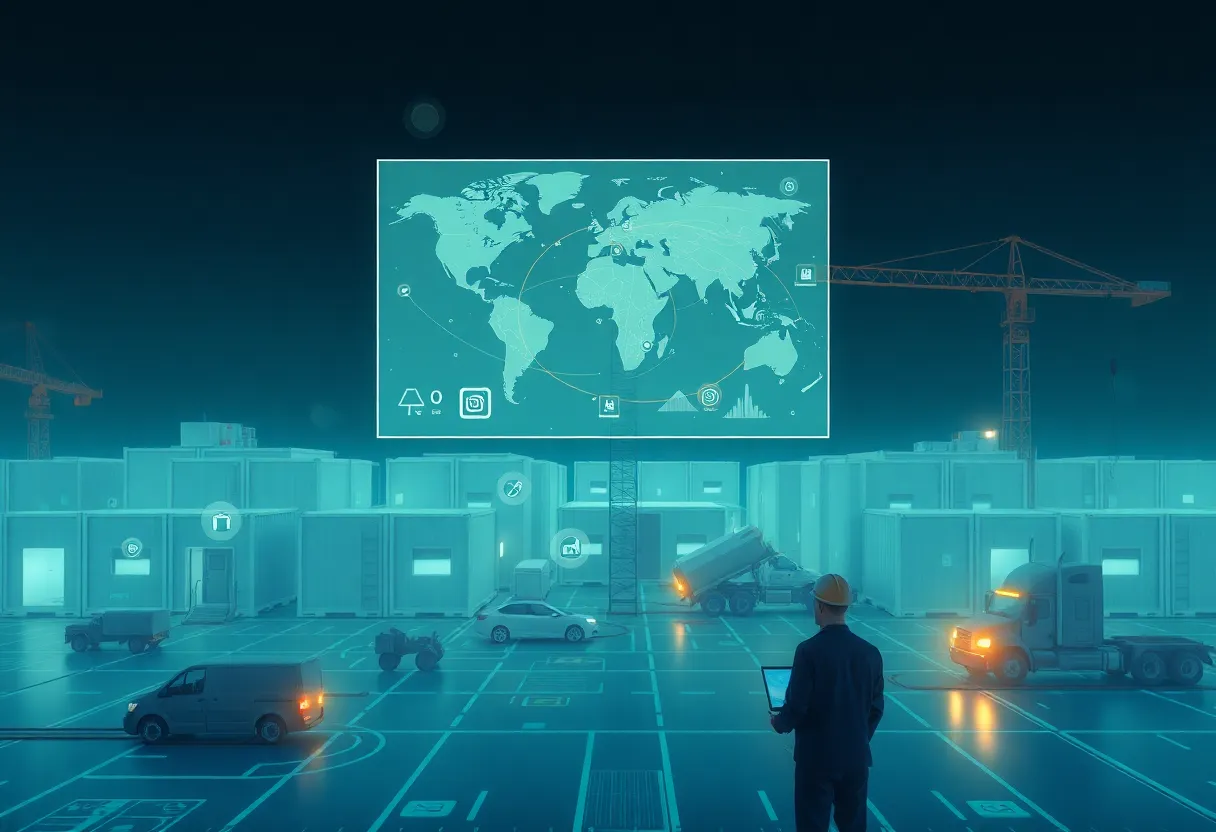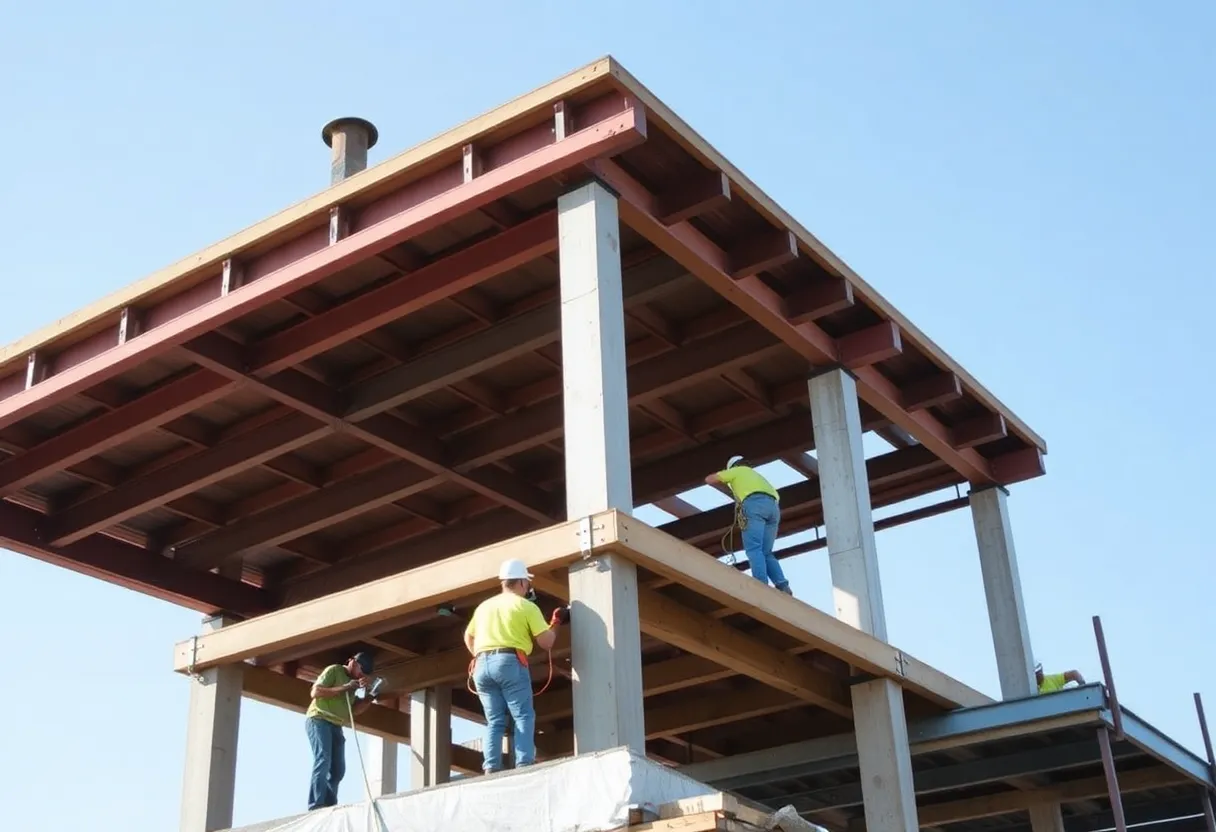Ansan, South Korea, August 15, 2025
News Summary
A research team at Hanyang University ERICA has developed a digital twin–enabled facility management system (DT-FMS) tailored for relocatable modular buildings. The framework integrates BIM, IoT and GIS across three layers—physical, digital and service—to enable real-time monitoring, lifecycle performance analysis, logistics simulation and decision support for module distribution and reuse. A field case using a relocatable modular school project in South Korea demonstrated improved management efficiency, better-informed relocation planning and enhanced potential for circular reuse. The study highlights needs for platform interoperability and workforce training to scale digital twin solutions in modular construction.
Hanyang University team unveils a digital‑twin framework to improve relocatable modular building management
Date: August 14, 2025 — Source attribution: Hanyang University ERICA. Edited by: Gaby Clark. Reviewed by: Robert Egan (scientific/editorial review). The research article appears in Automation in Construction (2025) with DOI 10.1016/j.autcon.2025.106249. The page notes the summary was automatically generated using an LLM and that content was reviewed and fact‑checked under standard editorial procedures.
Top line
A research team led by an associate professor in the School of Architecture & Architectural Engineering at Hanyang University ERICA has published a new digital twin–enabled facility management system (DT‑FMS) designed for relocatable modular buildings (RMBs). The framework integrates BIM (building information modeling), IoT (Internet of Things), and GIS (geographic information systems) to support real‑time monitoring, lifecycle performance analysis, logistics simulation, and decision making for module distribution and reuse.
Why it matters
The DT‑FMS aims to fill a gap where digital twins have been adopted in other sectors but remain underused in modular construction. By creating a digital replica of physical assets that ties together 3D building models, live sensor data and location intelligence, the framework is intended to improve operational efficiency, reduce waste through reuse and reconfiguration of modules, and enable better relocation planning across repeated project cycles.
How the DT‑FMS works
The framework is organized into three interconnected layers: a physical layer for on‑site tracking and communications among resources, modular units and people; a digital layer for modeling, data integration and analytics; and a service layer that provides user interfaces for monitoring, control and decision support across a building’s lifecycle. The physical layer explicitly includes stakeholders such as engineers and workers to emphasize human‑system interactions in logistics and maintenance workflows.
Case study and results
Researchers tested the system using a relocatable modular school project in South Korea. The practical application demonstrated that the DT‑FMS supported faster and better‑informed decisions about module distribution, reuse and relocation, resulting in improved management efficiency. The study highlights how the integrated DT model enables real‑time monitoring, performance analysis and logistics simulation to inform lifecycle choices.
Research team and contribution
The lead research team was led by an associate professor at Hanyang University ERICA and included contributions from other researchers including a doctoral researcher from the same university. The published paper lists multiple authors and lays out the DT‑FMS architecture, data flows, and a field case demonstrating operational benefits for relocatable modular assets.
Broader context for modular construction
The DT‑FMS arrives amid growing national and international interest in modular construction. Industry efforts include demonstrations of prefabricated concrete apartments and prototype residential modules sized for multi‑story projects, as well as large deployment goals and completed projects in overseas markets. Market projections show the modular construction sector expanding substantially through the middle of the decade, driven by needs for speed, quality control and labor‑efficient production.
Reported advantages for modular approaches include shorter timelines, consistent quality, lower onsite labor demand and sustainability benefits tied to off‑site production. Challenges remain, including regulatory hurdles, transport and lifting constraints that limit module size, fire‑resistance requirements for tall buildings, and an ongoing cost premium largely tied to upfront factory and logistics investments.
Policy and industry implications
Researchers position the DT‑FMS as a practical tool that supports a more circular approach to modular assets by enabling planned reuse, reconfiguration and relocation. This can reduce material waste and improve asset value across repeated project cycles. The paper and accompanying materials point toward needs for broader investment in data systems, interoperability between BIM/IoT/GIS platforms, and workforce training to realize the full benefits of digital twin solutions for modular construction.
Additional page details
The article page includes standard reader interaction options such as sharing and commenting, and notes privacy and cookie policies that govern site behavior. Contact and feedback routes were listed for readers to send general inquiries or comments. The page also includes an explicit note that the summary was automatically generated using an LLM and that a full disclaimer is available.
FAQ
What is the DT‑FMS?
The DT‑FMS is a digital twin–based facility management framework tailored for relocatable modular buildings. It connects BIM, IoT and GIS to provide real‑time monitoring, analytics and logistics simulation across a building’s lifecycle.
What are the main components of the framework?
The framework is structured into three layers: the physical layer for tracking modules, resources and people; the digital layer for models, data integration and analytics; and the service layer for user interaction and decision support.
What practical benefits does the system deliver?
In a demonstrated case study, the system improved management efficiency, enabled better module distribution and reuse planning, and supported logistics decisions that can lower waste and increase asset value over repeated projects.
How does this relate to a circular economy?
By enabling reuse, reconfiguration and optimal relocation of modular units, the DT‑FMS helps extend asset life and reduce material waste, aligning modular building practice with circular economy principles.
Where can I read the full research?
The study is published in Automation in Construction (2025). The paper title and DOI are provided in the article metadata for reference.
Key features at a glance
| Feature | What it does |
|---|---|
| DT‑FMS | Provides a unified digital twin framework for relocatable modular buildings covering monitoring, analytics and logistics. |
| BIM integration | Delivers robust 3D models and comprehensive building information for planning and lifecycle management. |
| IoT connectivity | Feeds real‑time sensor data into the digital model for live monitoring and condition‑based decisions. |
| GIS support | Adds geographic data for routing, site selection and location‑based logistics of modular units. |
| Three‑layer architecture | Physical, digital and service layers ensure data flows from on‑site assets to analytics and user tools. |
| Lifecycle decision support | Enables reuse, reconfiguration and relocation planning to improve efficiency and sustainability. |
Deeper Dive: News & Info About This Topic
Additional Resources
- Tech Xplore: Digital‑twin framework for relocatable modular buildings (Hanyang University)
- Wikipedia: Digital twin
- Korea Bizwire: Modular construction takes off in South Korea
- Wikipedia: Modular construction
- Korea Bizwire: LG’s modular smart cottage in Korea
- Google Search: smart modular cottage South Korea
- Reuters: South Korea plans two new large nuclear reactors
- Encyclopedia Britannica: Search — South Korea nuclear power
- Bloomberg: South Korea turning to small reactors
- Google Scholar: small modular reactors South Korea
Author: Construction FL News
The FLORIDA STAFF WRITER represents the experienced team at constructionflnews.com, your go-to source for actionable local news and information in Florida and beyond. Specializing in "news you can use," we cover essential topics like product reviews for personal and business needs, local business directories, politics, real estate trends, neighborhood insights, and state news affecting the area—with deep expertise drawn from years of dedicated reporting and strong community input, including local press releases and business updates. We deliver top reporting on high-value events such as the Florida Build Expo, major infrastructure projects, and advancements in construction technology showcases. Our coverage extends to key organizations like the Associated Builders and Contractors of Florida and the Florida Home Builders Association, plus leading businesses in construction and legal services that power the local economy such as CMiC Global and Shutts & Bowen LLP. As part of the broader network, including constructioncanews.com, constructionnynews.com, and constructiontxnews.com, we provide comprehensive, credible insights into the dynamic construction landscape across multiple states.





